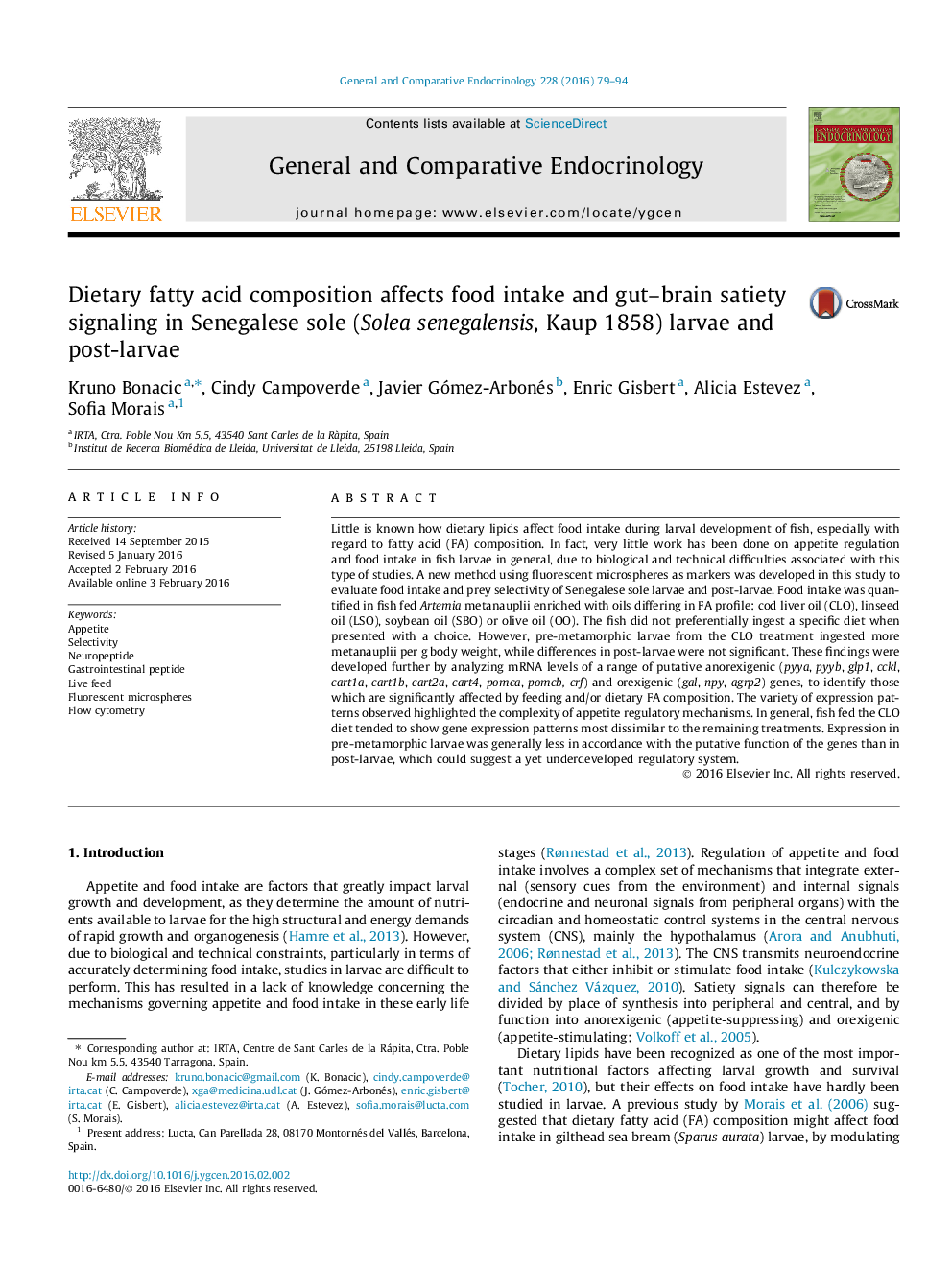| کد مقاله | کد نشریه | سال انتشار | مقاله انگلیسی | نسخه تمام متن |
|---|---|---|---|---|
| 2799813 | 1568878 | 2016 | 16 صفحه PDF | دانلود رایگان |

• Larvae fed high LC-PUFA Artemia ate more than when fed vegetable oil treatments.
• Expression of central and peripheral appetite regulating peptides was analyzed.
• Not all genes responded to feeding/diet in accordance with their putative function.
• In post-larvae, genes were regulated more in accordance with their function.
• In fish fed cod-liver oil, expression generally differed from the other treatments.
Little is known how dietary lipids affect food intake during larval development of fish, especially with regard to fatty acid (FA) composition. In fact, very little work has been done on appetite regulation and food intake in fish larvae in general, due to biological and technical difficulties associated with this type of studies. A new method using fluorescent microspheres as markers was developed in this study to evaluate food intake and prey selectivity of Senegalese sole larvae and post-larvae. Food intake was quantified in fish fed Artemia metanauplii enriched with oils differing in FA profile: cod liver oil (CLO), linseed oil (LSO), soybean oil (SBO) or olive oil (OO). The fish did not preferentially ingest a specific diet when presented with a choice. However, pre-metamorphic larvae from the CLO treatment ingested more metanauplii per g body weight, while differences in post-larvae were not significant. These findings were developed further by analyzing mRNA levels of a range of putative anorexigenic (pyya, pyyb, glp1, cckl, cart1a, cart1b, cart2a, cart4, pomca, pomcb, crf) and orexigenic (gal, npy, agrp2) genes, to identify those which are significantly affected by feeding and/or dietary FA composition. The variety of expression patterns observed highlighted the complexity of appetite regulatory mechanisms. In general, fish fed the CLO diet tended to show gene expression patterns most dissimilar to the remaining treatments. Expression in pre-metamorphic larvae was generally less in accordance with the putative function of the genes than in post-larvae, which could suggest a yet underdeveloped regulatory system.
Journal: General and Comparative Endocrinology - Volume 228, 1 March 2016, Pages 79–94